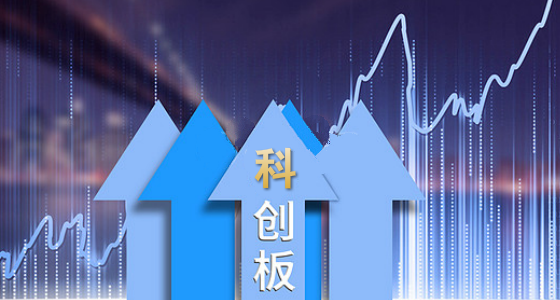PharmaSources/XiaoyaowanMarch 27, 2019
Tag: pharmaceutical industry , Bio-pharmaceutical , bio-medicine , STIB
Shanghai Fudan-Zhangjiang Bio-Pharmaceutical Co., Ltd., a company listed in Hong Kong, S.A.R., China, has recently announced that it planned to issue no more than 120 million shares on the Sci-Tech Innovation Board (STIB) of Shanghai Stock Exchange (SSE), with par value per share of RMB0.1.

According to information, Fudan-Zhangjiang mainly engages in research, development, manufacture and sales of innovative biopharmaceutical products, and has become an innovative biopharmaceutical company with the core capacity of the intellectual property creation. The enterprise meets the enterprise types recommended in the Guidelines for Recommending Enterprises for Listing on the Sci-Tech Innovation Board of Shanghai Stock Exchange issued by SSE.
It is the first Chinese pharmaceutical company that plans to be listed on the STIB, which will officially start the STIB era of China’s pharmaceutical industry.
STIB launching process
Overall, the STIB will mainly serve sci-tech innovation enterprises that are in line with China’s national strategies, have breakthroughs in core and key technologies, and possess high degree of market recognition; it will take supporting China’s high-tech industry and strategic emerging industries as the development goal, and strive to boost development of innovation enterprises, focusing on their R&D over their profits.
STIB Era of China’s pharmaceutical industry
According to data of EvaluatePharma, with the growing of new drug R&D costs, the global pharmaceutical R&D investment is expected to reach USD160 billion in 2021, with the compound annual growth rate of 1.9% from 2016 to 2021. The pharmaceutical industry, especially bio-medicine industry, is one of the high-tech industries today and one of the fields recommended for the STIB, and innovative drug development has typical characteristics of high investment, high risk, and long cycle.
In the U.S. that is at the forefront of innovative drug development, the early development of innovative drugs obtains high capital investment owing to the involvement of PE and VC investment institutions, etc., and the mature staged technology exchange market can ensure the profits and exit of the early capital in subsequent stages; such mechanism breeds good soil for innovative drug development. And numerous small and sound biomedical companies and bio pharmaceutical companies have thus developed and grown to become one of sources of pharmaceutical innovation, and some have grown into pharmaceutical giants, such as Genentech.
There are currently 2,643 companies listed on Nasdaq in the U.S., including 737 medical-related companies which are a main force. The biomedical plate accounts for about 8% of Nasdaq market cap, being the plate with the highest market cap on Nasdaq following the TMT plate.
In China, A shares’ valuation system that focuses on performance has become obstacles to the listing financing of many quality innovative pharmaceutical enterprises, and Chinese innovative biotech companies that are not yet profitable can only finance by depending on VC/PE, or listing in Hong Kong, S.A.R., China or U.S.
According to report, over 600 Chinese innovative pharmaceutical enterprises financed by depending on VC/PE in 2018, with the total financed amount of up to RMB97.9 billion. With the implementation of "the biggest reform in 24 years" of HKEX in Apr. 2018, biotech companies that are not yet profitable may be listed in Hong Kong, S.A.R., China. And the 6 innovative pharmaceutical enterprises including Ascletis, BeiGene, Hua Medicine, Innovent, Junshi Biosciences, and CStone Pharmaceuticals have been listed on HKEX, which were all not yet profitable when listed.
The launch of the STIB of SSE will be conductive to the listing financing of the Chinese pharmaceutical industry, especially the innovative pharmaceutical companies, which will serve as an important weather vane of the capital market. And the difficulties in listing financing of pharmaceutical innovation companies in Mainland China that are not yet profitable will become a thing of the past as the STIB era of China’s pharmaceutical industry starts.
Seen from the published rules of the STIB, if the biomedical companies have no income and profit for the current period and their expected market cap is not lower than RMB4 billion, the condition for listing is that they shall have at least one core product approved for Phase II clinical trial. The STIB will greatly expand the financing channel of innovative pharmaceutical enterprises; benchmarked against the Nasdaq, the biomedical plate may become a main plate of the STIB in the future.
The launch of the STIB, in the long term, is expected to create conditions for the development of small and sound biotech innovation pharmaceutical companies in China, expand the withdrawal channel of VC/PE, accelerate the upgrading of China’s pharmaceutical industry, and start a new era of China’s pharmaceutical innovation.
Xiaoyaowan, a pharmaceutical industry practitioner, a word carrier in the We-media era focusing on changes of the pharma industry.
-----------------------------------------------------------------------
Editor's Note:
To apply for becoming a contributor of En-CPhI.cn,
welcome to send your CV and sample works to us,
Email: Julia.Zhang@ubmsinoexpo.com.


Contact Us
Tel: (+86) 400 610 1188
WhatsApp/Telegram/Wechat: +86 13621645194
Follow Us:




 Pharma Sources Insight January 2025
Pharma Sources Insight January 2025


